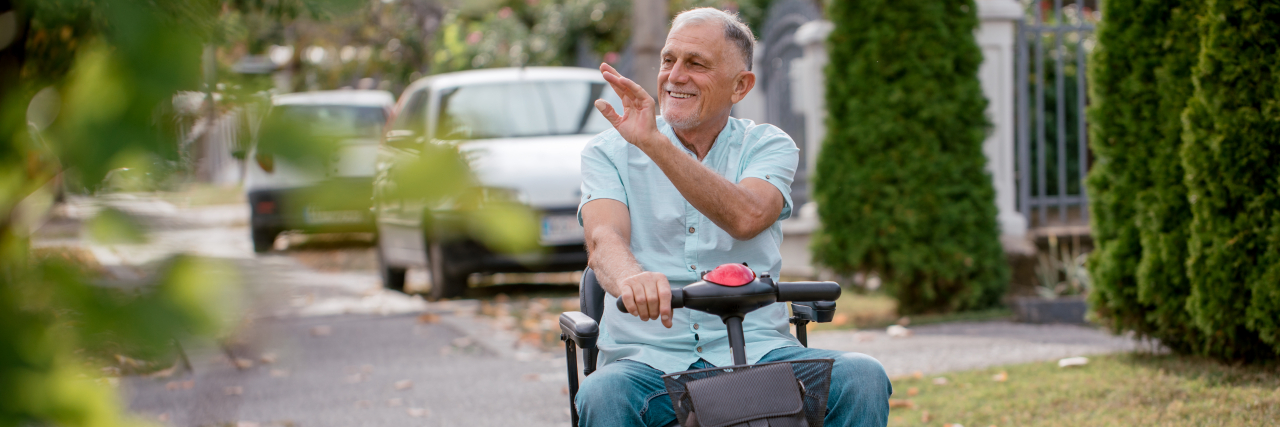I Asked My Dad What People Should Know About Aging With Cerebral Palsy
For Cerebral Palsy Awareness Month, I asked my dad, Terrence Yenko, about his experience living with cerebral palsy (CP) and what he wants the public to know about aging with CP. I also asked him about some of the challenges that he faces with mobility and accessibility as he gets older. The following is what he wrote outlining his experience:
As you may be aware, March is National Cerebral Palsy Month. As someone who’s lived with cerebral palsy for 63 years, I have spent years advocating for cerebral palsy awareness.
I am not as physically impacted as some other people with cerebral palsy. I use a walker to get around, and I have been doing so since 2000. When it comes to walking long distances, I get tired easily and my heart often beats too quickly. When I go out and about in the community, I typically use a scooter or a wheelchair if I can. But having to use these mobility devices can also create problems.
Having cerebral palsy means there are extra costs involved that many people may not even think about. The number one factor is mobility. Are you aware that you must use a wheelchair or mobility scooter inside your home before health insurance will pay for one? As for myself, I use a walker inside, but I use a scooter outside where more walking is required. Also, I can only walk about 50 feet before my heart pounds out of my chest.
The requirements for insurance coverage of mobility aids have changed in the past year. Under the new guidelines, you must use your mobility aid indoors, and if you meet the criteria, then you may get an “indoor scooter” if you are one of the lucky ones. There is a significant difference in ground clearance.
Being disabled should not mean only being at home. Unfortunately, there is often not enough support for individuals with cerebral palsy as we age, and this can strictly limit our independence. We were all born as God’s people, but I do not feel that we have as many rights as able-bodied people.
I honestly feel for young people with cerebral palsy who live in low-income families and cannot afford adaptive equipment that could help them with independence. The cost of accessibility is far too high, especially considering the minimal income that is provided through the government for people with disabilities. Many people with CP are not able to pay for the adaptive equipment that would allow them to simply access their environment.
With all this being said, I think it is about time to re-evaluate these guidelines. One of the best ways to do this would be to hire a person with a disability so they could have direct input on these decisions. It would be beneficial and make a lot more sense. No one can understand the difficulties of everyday life with cerebral palsy unless they live with it.
This story was written with contributions from Terrence Yenko.
Getty image by shapecharge.

